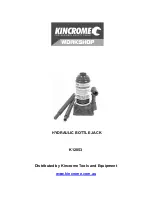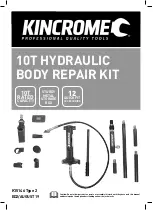
21 - 1
Alternator
General Description
The alternator is a three phase generator having a rotating
field winding and static power windings.
When the start switch is turned on, current from the battery
flows by way of the 'No Charge' warning light to the field
winding. This creates a magnetic field which supplements
the residual magnetism in the rotor poles. As the engine is
started, the fan belt drives the rotor and alternating current is
generated in the power windings as they are cut by the
rotating magnetic field. Output is controlled by a solid state
regulator which varies the field current in accordance with
electrical demand.
Servicing is restricted to periodic inspection of slip ring
brushes. Bearings are 'sealed for life'.
Service Precautions
a
Ensure that the battery negative terminal is connected
to the earthing cable.
b
Never make or break connections to the battery or
alternator, or any part of the charging circuit whilst the
engine is running. Disregarding this instruction will
result in damage to the regulator or rectifying diodes.
c
Main output cables are 'live' even when the engine is
not running. Take care not to earth connectors in the
moulded plug if it is removed from the alternator.
d
During arc welding on the machine, protect the
alternator by removing the moulded plug (or if separate
output cables fitted, remove the cables).
e
If slave starting is necessary, connect the second
battery in parallel without disconnecting the vehicle
battery from the charging circuit. The slave battery may
then be safely removed after a start has been obtained.
Take care to connect batteries positive to positive,
negative to negative.
Charging Test
Ensure that all battery and alternator connections are in
place, secure and making good metal - to - metal contact,
especially the 'earth' connections to chassis and engine.
Make sure that the alternator drive belt tension is correctly
adjusted.
If the battery is in a fully charged condition, switch on the
working lights for 3 minutes before commencing the test.
Alternatively, operate the starter for a few moments with the
engine shut off solenoid (ESOS) fuse removed (refer to fuse
identification pages).
Install a 100 amp open - type shunt between the battery
positive lead and the battery positive terminal.
Connect a multimeter positive lead to machine side of the
shunt and negative lead to battery side of the shunt.
Connect the leads to the meter and set the meter to the
relevant range as follows.
AVO 2002
Red lead to volts (middle) socket on meter.
Black lead to negative on meter.
RH slider to DC voltage.
LH slider as shown in the illustration.
AVO 2003
Red lead to amps socket (marked
A
) on the
meter.
Black lead to negative on meter.
RH slider to DC voltage
LH slider to 200 Shunt
FLUKE 85
Red lead to volts socket (marked V )on
meter.
Black lead to COM socket on meter.
Set dial to mV.
Start the engine and run at maximum speed (see
Technical
Data
). Meter should show maximum alternator output in
Amps (see
Technical Data
).
Note:
The meter reading should be taken as soon as
possible after starting the engine, as the charging current
will fall rapidly.
A zero reading indicates failure of the alternator and may be
caused by one of the following conditions. These are listed
in the order of probability.
a
Defective suppression capacitor.
b
Dirty slip rings or worn brushes.
c
Defective regulator.
d
Defective rectifier.
e
Open or short - circuited field (rotor) windings.
f
Open or short - circuited power (stator) windings.
To check for fault
a
, disconnect the capacitor and repeat the
charging test. Renew the capacitor if necessary.
To check for faults
b
and
c
, remove the regulator and brush
box assembly. Check the condition of the brushes and, if
necessary, clean the slip rings using extra-fine glasspaper.
The regulator may only be checked by substitution.
Faults
d
,
e
, and
f
may be checked only by removing and
dismantling the alternator for further testing.
Section C
9803/3280
Section C
21 - 1
Issue 1
Service Procedures
S08346
















































